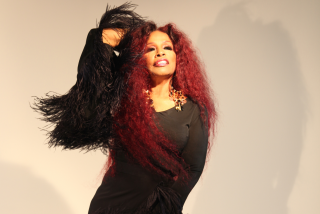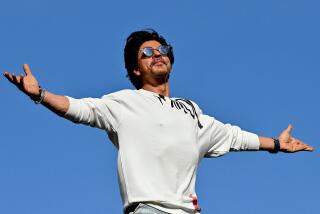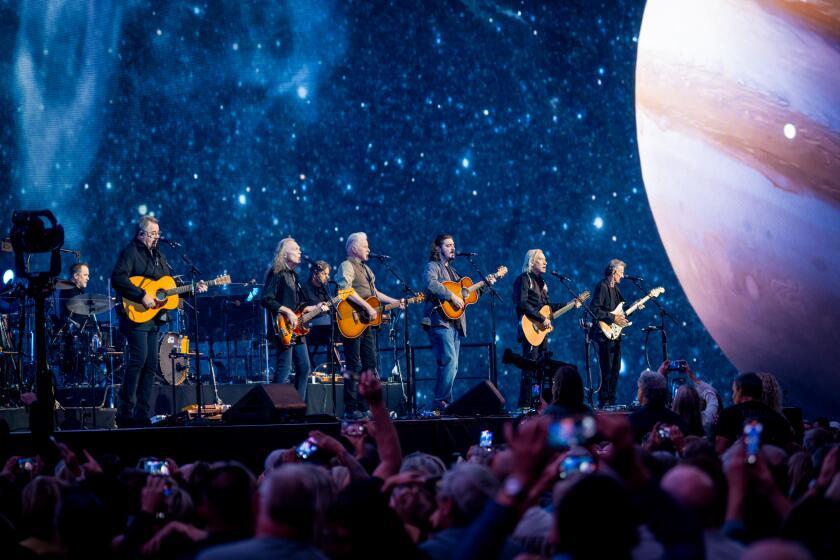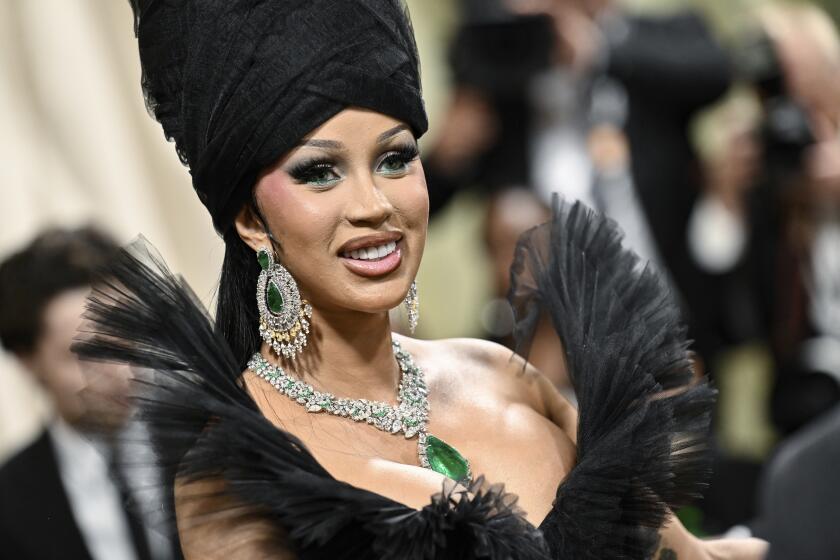Khan Demonstrates Why He’s World Music Leader of Mid-’90s
As global music has made inroads in the United States, it’s been easier to attract Western fans when you have the enthusiastic support of some of pop and rock’s most respected figures.
That’s a point demonstrated in the ‘60s by the Beatles’ embrace of Ravi Shankar and the sitar and more recently by Paul Simon’s “Graceland” collaboration with South African musicians.
Thanks to endorsements by such influential artists as U2, Eddie Vedder and Peter Gabriel, Pakistan’s Nusrat Fateh Ali Khan is the world music choice of the mid-’90s--and it’s not just a case of him being the flavor of the month.
As Khan demonstrated in his joyous two-hour concert Wednesday night at the Universal Amphitheatre, his music is so culturally enriching that it may be the easiest way to take an exotic vacation, short of frequent flyer miles.
With the simple beauty and dynamics of his voice, Khan--without a word of English--transports listeners in ways that are liberating and glorious.
Backed by a 10-piece assembly of singers and musicians, Khan--a large man with the somewhat round bulk of a sumo wrestler--is a master of qawwali, the devotional music of Sufi Muslims.
But don’t let the spiritual underpinnings suggest that the music is solemn or inaccessible. Similarly, Khan’s most significant Western showcase--his haunting and stark pairing with Pearl Jam’s Vedder on music for the film “Dead Man Walking”--is only one shade in what on stage becomes a captivating rainbow of musical colors.
As Khan and his cohorts sit with legs crossed on a stage platform for the entire performance, the music leaps, then recedes, then rushes forward again in sudden and often thrilling ways.
Part of the enjoyment of seeing Khan for the first time is to watch the presentation unfold. Wearing a blue-ish robe that distinguishes him from the soft yellow garb of the rest of his entourage, Khan walks on stage and takes his place on the floor of the raised platform following an opening set by Jai Uttal, who mixes Indian strains with funk, jazz and pop in ways that are earnest but uninvolving on this night.
*
Once in place, Khan closes his eyes as if waiting for a moment of inspiration. The first sound is the faint pounding on a hand-held drum, followed by the gentle, drone-like sound of the harmonium (a small, hand-pumped organ).
The tension builds as you wait for his voice to enter the proceedings, but the musical warmup continues for several minutes. Finally, Khan and his support singers begin their own warmup.
Suddenly, the music and voices combine, drawing shrieks and shouts of approval from the audience, which remains predominately Indian and Pakistani despite all the attention from the Vedder teaming.
Khan, who punctuates his vocals with cutting hand movements, may be the center of the group, but the other singers add substantially to the passion and character of the music, following his vocal leads in the call-and-response fashion common to gospel and some soul music.
By the end of the performance, the audience is dancing energetically in the aisles and in front of their seats. And then the whole thing is over, leaving you, like a good vacation, already yearning for a return visit.
In his best moments, Khan may simply be the best mix of charisma and passion that has arrived here from the world music community since reggae king Bob Marley.
More to Read
The biggest entertainment stories
Get our big stories about Hollywood, film, television, music, arts, culture and more right in your inbox as soon as they publish.
You may occasionally receive promotional content from the Los Angeles Times.










